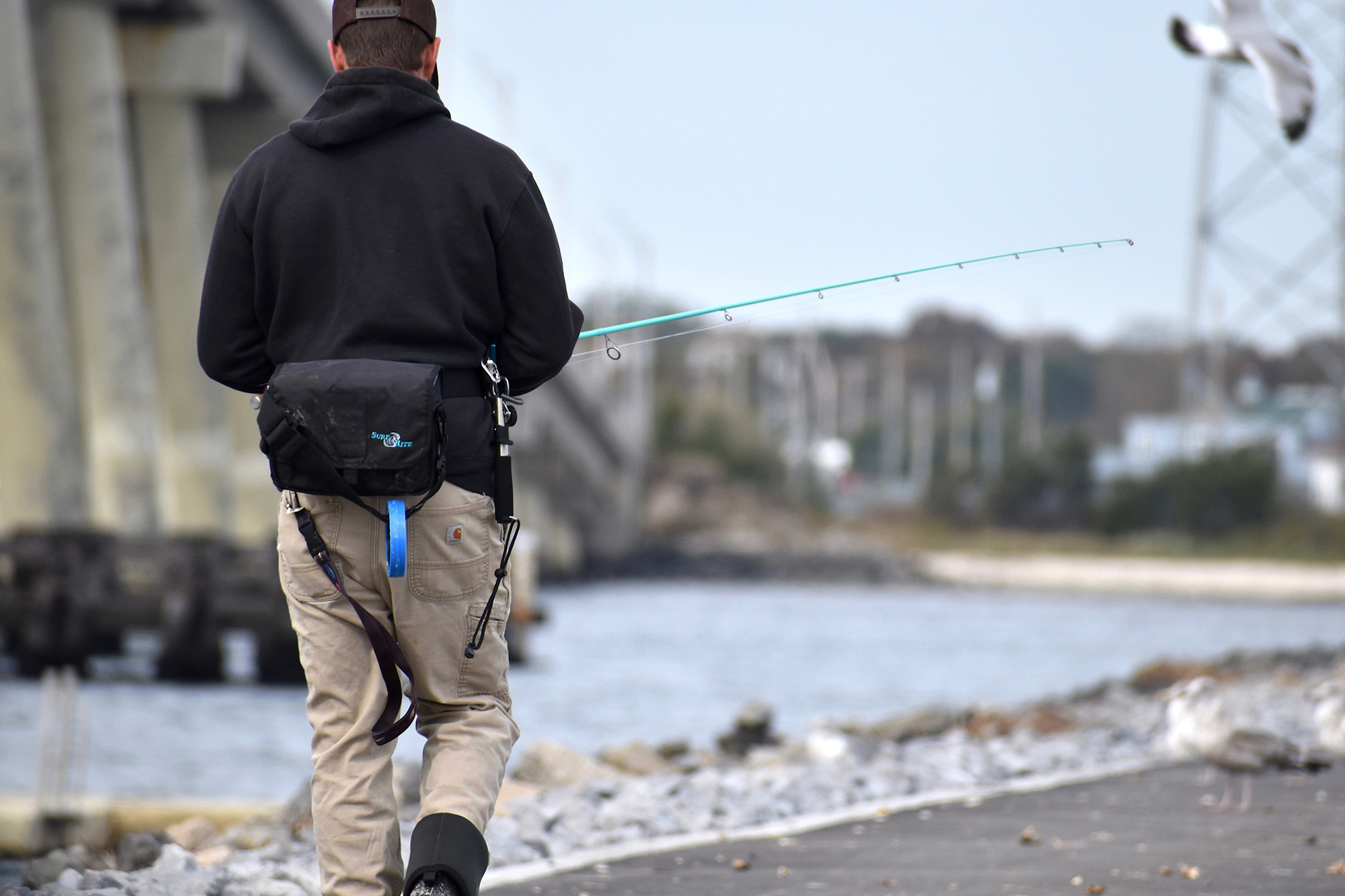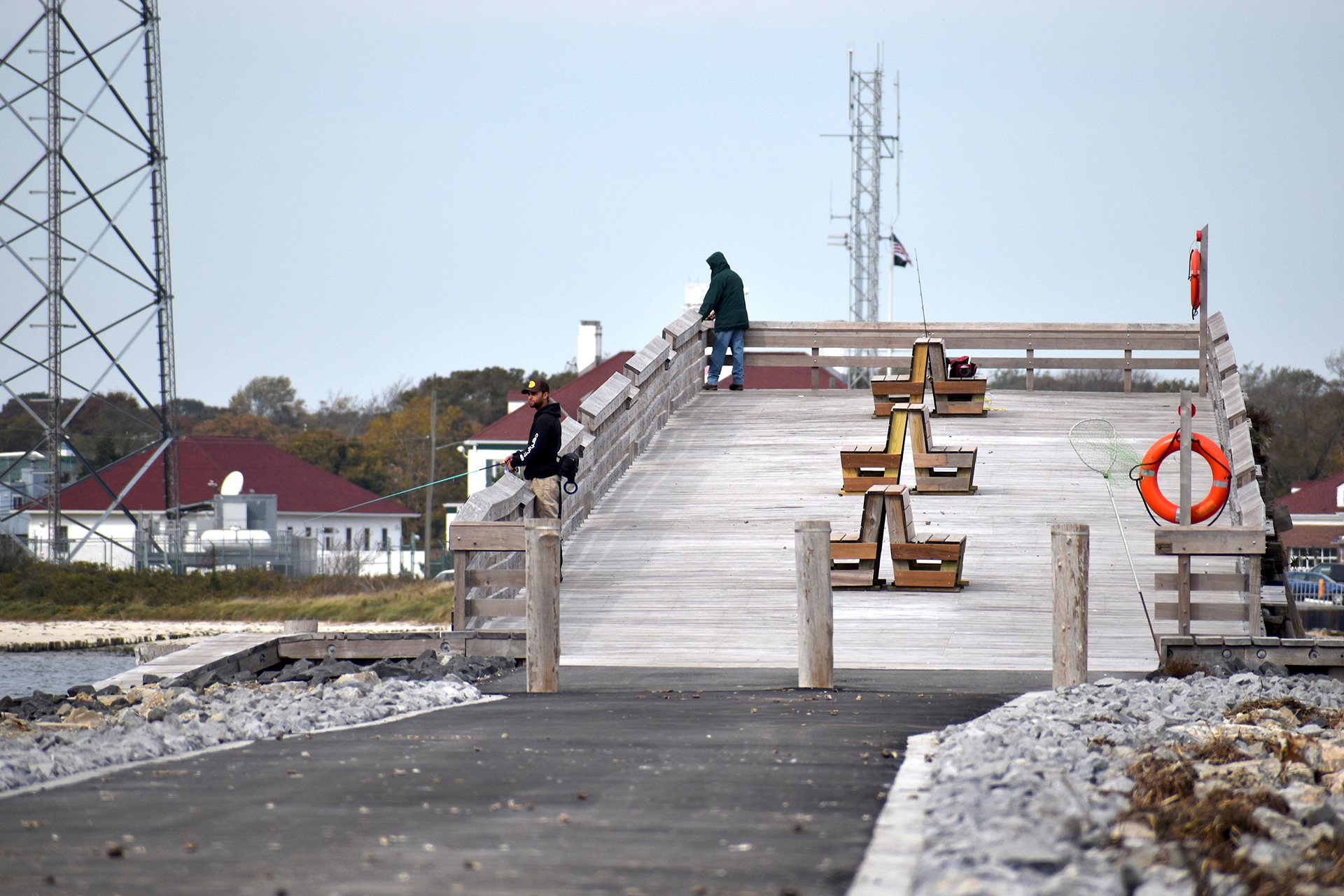Renewing Treasured Piece Of Hampton Bays A Success


When Southampton Town Trustee Scott Horowitz was walking past former supervisor Anna Throne Holst’s office and overheard a conversation about demolishing the Ponquogue piers, he knew that wasn’t going to happen on his watch.
He rounded up some key players like trustees president Ed Warner Jr., local fishermen, and Long Island Divers Association President Barry Lipsky in making sure the piers were not only going to be preserved, but rehabilitated.
“We worked hard to save what we have here now,” said Warner Jr. The maritime park on the south side of the bridge is named for his father, a former trustee. “One of the things my father really believed in was the sustainability of our resources. That’s what we continue as trustees in preserving and protecting our maritime heritage. It’s so important. This is truly the jewel of Hampton Bays.”
Lipsky also knew immediately that the piers could not go.
“I was basically in shock, but at the same time, thought, ‘I have to do something,’” he said. “I gathered a team of experts and made a presentation to the board.”
The area is a popular diving spot, where there’s plentiful striped bass, blues, flounder, and other fish, beds of mussels, horseshoe crabs, lady and spider crabs, and fish from down south that get caught in Gulf Stream.
“This area is the best shore dive on Long Island and is one of the best dive sites in the whole northeastern United States,” Lipsky said. “Marine life use the bridge to live — it’s a place of safety, its shadow protects fish. Mankind and nature have a symbiotic relationship here with the Ponquogue Bridge.”
Councilman John Bouvier, an expert diver, said the first time he experienced tropical fish was in Hampton Bays.
“I swam nose-to-nose with a triggerfish,” he said, smiling. “Open water diving is also done here when certified. You go to the pool and learn, and then come here and experience the real world. There isn’t a better real world I’ve experienced than the one here.”
The town board realized the history and significance of the bridge and piers — which were severely damages following the 2012 hit of Superstorm Sandy — and decided to save them.

The original Ponquogue drawbridge was built in the late 1920s on timber piles, with the deck made of paved over two-by-fours, according to Southampton Town Director of Municipal Works Christine Fetten. Suffolk County constructed a more modern concrete bridge in the 1980s, and the bridge piers were acquired by the town in 1988 for use as pedestrian access for fishing and wildlife enjoyment. Today, what remains of the old bridge has been refurbished and repurposed into a new fishing pier, and beneath the surface of the Atlantic Ocean the old center drawbridge was added to a fishing reef, town historian Julie Greene said.
“One of the things my father really believed in was the sustainability of our resources,” Ed Warner Jr. said. “This is truly the jewel of Hampton Bays.”
Fetten said the first thing the town did was enlist bay constables along with trustees and members of the parks department to go out during the low tide cycle and see if the marine borers had worked their way into the piles. Marine borers are worms that live in the water and like to eat the pile, which is the foundation of the bridge. Mechanical Marine Construction dive inspection services was enlisted to conduct underwater inventory and examine structural support piles. The south structure’s 19 bents and associated 110 piles were assessed. Eight piles were found in need of replacement, and some additional were replaced. The south side of the bridge, located in the Edward J. Warner Sr. Marine Park, will be used by divers, while the north side is more suitable as a fishing pier.
“That gave us the preliminary information we needed for a more technical design to fix the bridge,” Fetten said. “We found more stringers and girders needed to be replaced once we ripped up asphalt though. More protection was needed to make the bridge last longer and protect what extreme beauty and habitat lies beneath. It takes an entire community to do a project like this.”
L.K. McLean Associates worked with the town on the design, and Chesterfield Associates won the contract to do the heavy lifting. Hardware came out of South America, and getting the pieces in the sizes the town needed was a difficult task.
In total, the project cost $2 million, with the Federal Emergency Management Agency agreeing to reimburse the town. Construction began in 2017 to not only add a new sustainable deck and handrail but add new bulkheads, recreational access ramps, improve overall access and safety, and preserve and protect the marine environment.

Hampton Bays Rotary Club President Sheryl Heather got involved when looking for her organization’s yearly water-related project. With the help of a matching grant, Cornell Cooperative Extension’s marine division helped construct interpretive signage on the pier and at the Mark Sinclair memorial gazebo, showing bird and plant life, and underwater life that live around and beneath the piers. There are QR codes on the signs that will pull up Long Island Divers Association aerial and underwater video footage, among other related links.
“This is a real, world-class historic destination now,” she said.
Supervisor Jay Schneiderman joked a “beware of falling shellfish” sign is needed, as seagulls harvest their own — dropping them from up high to crack their shells open.
Former Town Trustee John Semlear served with Warner Sr. for 13 years, and called him a wonderful friend.
“He left a beautiful legacy in Hampton Bays,” he said. “He envisioned young families taking their kids out to go fluke fishing, people getting a couple dozen clams, diving. He did a lot to preserve the way of life we cling to today.”
“What means the most to me is people are here celebrating my father,” Warner Jr. said. “He would give his right arm to somebody.”
Lipsky said because of all involved, the symbiotic relationship with man and marine life will last for another 100 years. Bouvier pointed out how critical it was that Horowitz happened to walk by the door at the right time to spearhead change.
“What Scott did was the right thing to do,” Bouvier said. “There’s no place quite like this.”
desiree@indyeastend.com



